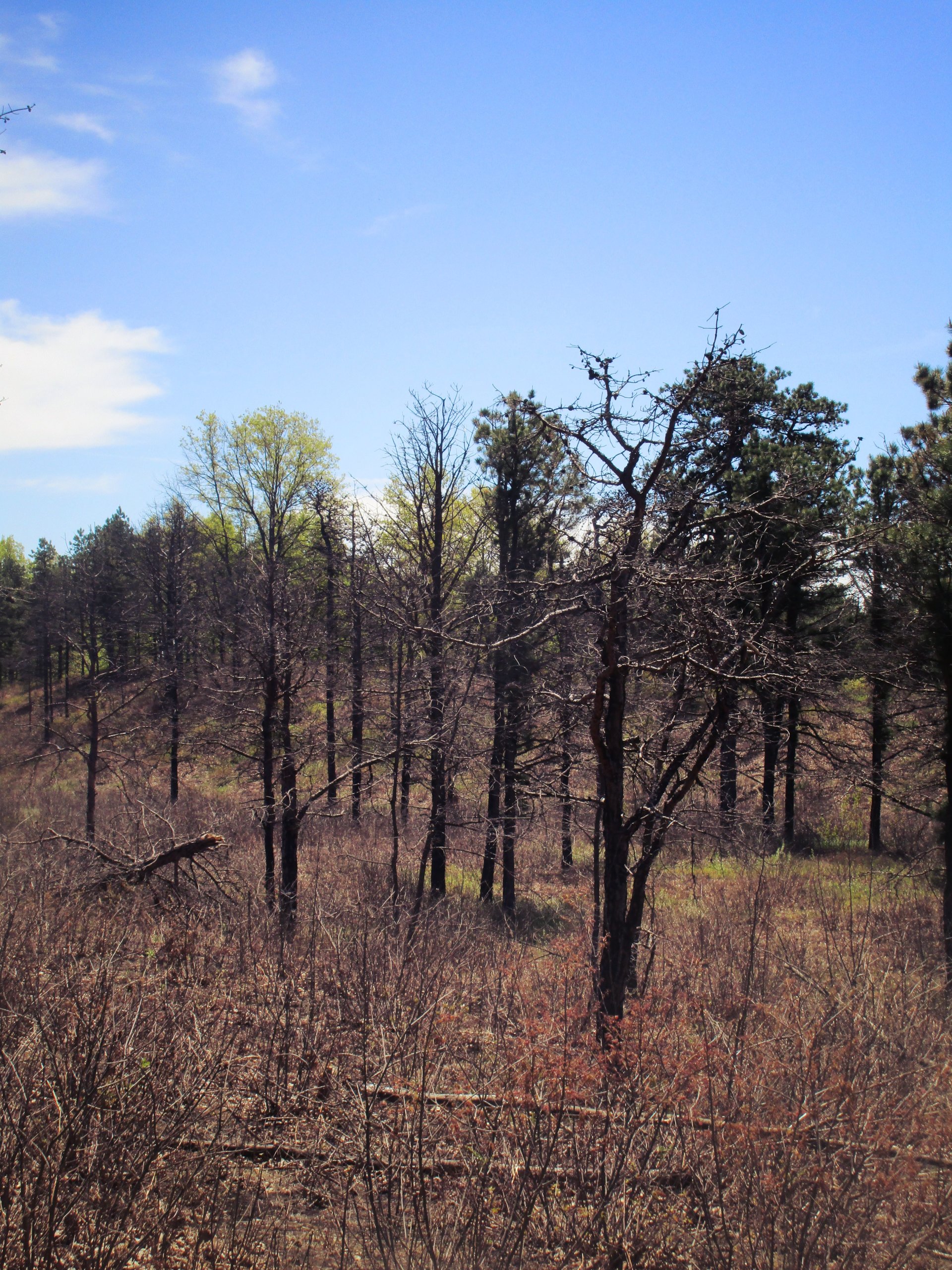Dear Common Councilmembers:
Thank you for again hearing our concerns about the need for good ecological and scientific review of the Pine Bush Mitigation/Restoration plan. There are many problems with the plan. Save the Pine Bush has presented many concerns to this body regarding the ecological impacts and financial waste involved in this mitigation plan.
First, I want to make sure you have adequate information regarding the pesticides approved in the Integrated Pest Management plan. The list is made up of pesticides phased out in the City of Albany’s Pesticide Ordinance with all other EPA toxicity Category I, II and III pesticides. These are chemicals we shouldn’t be buying with city money.
We need scientific advice and testimony regarding the ecological effects of this plan from agencies and experts who, unlike Clough Harbor and even the Albany Pine Bush Commission (which does so much good but is financially dependent upon agreement with City policy), are independent of the restoration plan and able to look at it objectively. Dr. Ward Stone has already agreed to advise the Common Council regarding the effects of these pesticides. We should also request the advice of Dr. David Carpenter, the group Beyond Pesticides, Anne Rabe of the Center for Health and Environmental Quality and other independent sources.
Most of my information is from Extoxnet, the Extension Toxicology Network, EXTOXNET is a cooperative effort of University of California-Davis, Oregon State University, Michigan State University, Cornell University, and the University of Idaho. Primary files are maintained and archived at Oregon State University.
Note: Use of these pesticides in the plan range from May through Winter. In Wisconsin where Karner Blue populations were increased by 800%, one of the ways they practiced effective habitat conservation was to limit when pesticides were sprayed by the Power companies to late in the year. Here, we are proposing to allow ourselves to spray all year.
Active Ingredients approved for use in the mitigation:
( All three categories are phased out by our ordinance. Toxicity category I are the most toxic.)
Muskrat control:
Zinc Phosphide. (EPA Toxicity Category I)
Herbicides:
Glyphosate (EPA Toxicity Category II; a Broadspectrum herbicide. A systemic pesticide that is toxic to lupine and hazardous to juvenile spadefoot toads which are a rare species of the Pine Bush ecosystem.)
Aquatic Approved Glyphosate (EPA Toxicity Category II)
Imazapyr (EPA Toxicity Category III)
2, 4-D (Toxicity Category I for eye exposure; III for oral exposure.) Hazardous to honeybees, fish and birds.
Triclopyr (Toxicity Category III, often mixed with more toxic ingredients.)
Aquatic Approved Triclopyr (Toxicity Category III)
Sethoxydim (Toxicity Category III, extremely dangerous to butterflies)
Methsulfuron Methyl (unknown)
Sulfometuron-methyl ( a general use pesticide, has been associated with fishkills, broadspectrum and can kill nontarget plants—unwanted ecological effects.)
Zinc Phosphide is of particular concern. It is a broad spectrum poison in bait form for mammals that kills rats, mice, voles, ground squirrels, prairie dogs, nutria, muskrats, feral rabbits and gophers. Its action is to convert to phosphine gas, which is nerve gas, in the animals digestive tract. It also poisons birds species and freshwater fish species. It’s proposed to kill muskrats – which are a native species and which should not be a problem species in a natural habitat. Zinc Phosphide is Restricted Use Only.
The fact that the research has not been done on the other chemicals though each has its own dangers to wildlife. We are very concerned that studies show that glyphosate has diminished Spadefoot toad populations elsewhere (in New Mexico) and yet it is used, even sprayed, in their habitat. This plan would increase glyphosate use by many times in the Pine Bush ecosystem.
We are concerned because Sethoxyidim, when sprayed to enhance butterfly habitat in Europe, actually wiped out one-third of a rare butterfly species in that area. We are concerned that using BT, a biological control, has a devastating effect on butterflies.
We are concerned that the use of these pesticides is illegal if funded by city money and immoral in terms of its impact on species and the fragile ecosystem of that region. This ecosystem which is under such assault that it has not been able to sustain viable populations of this area’s beloved and federally listed endangered species, the Karner Blue Butterfly.
In the words of a petition signed by over a hundred citizens
“We are also concerned by the large diversity of pesticides permitted by the City of Albany’s Rapp Road Landfill Expansion “Habitat Restoration” (mitigation) Plan. … Pesticides with potential negative effects on the rare species of the Pine Bush should automatically be listed as never to be used in this fragile ecosystem.
We agree with the language of the City of Albany Pesticide Ordinance which states that: “The purpose of this law is to phase out the use of pesticides in Albany, NY. The law sets forth a plan for “reduction, substitution and elimination” of pesticides for each of the City’s departments that have used and continue to use pesticides.”
We oppose the use of any EPA Toxicity Category I-III pesticides by the City of Albany at any of its sites, and we support annual pesticide reviews to eliminate any remaining pesticide use. Our opposition to pesticide use stems from our respect for both the human beings and the other species for whom the Capital District is a home.”
Thank you.
Grace Nichols, Save the Pine Bush.
